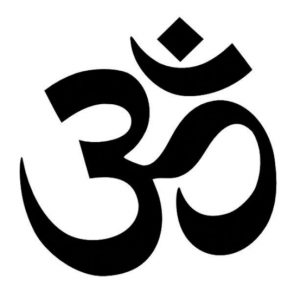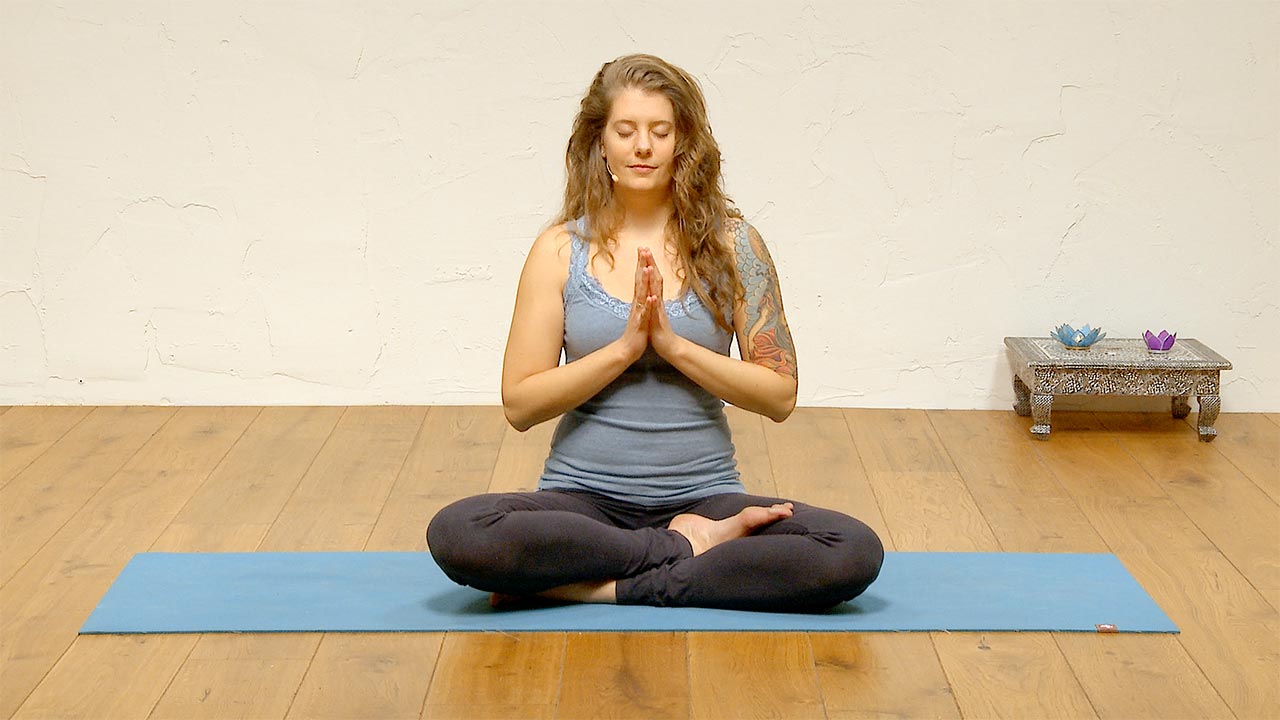From the frequently quoted ‘sound of the universe’ to its reported power as a means to unite those around us, Om (or Aum) is a small word that carries a multitude of meaning. We’ll take a brief look it the origin and meaning of Om and how to chant it.
The word Om appears to have originated in the Mandukya Upanishad, one of a collection of ancient texts exploring philosophical concepts of Hinduism. It tells us that ‘Om is what has been, what is and what shall be’.
Om represents everything – the beginning, the middle and the end, the past, the present and the future. It encompasses all sounds – mankind, nature, machinery … it is the hum of the earth. ~ Mandukya Upanishad
Sound and meaning of Om or Aum

OM is both a visual symbol and a sacred sound or mantra which can be heard and spoken. The syllable is composed of the three sounds ‘A’, ‘U’ and ‘M’ – AUM.
‘A’ (pronounced as an elongated “awe”). This sound represents the beginning – the creation of the universe and everything within it. It is said to symbolise the ‘conscious or waking state’. The Hindu tradition this associates the sound with Brahma – the Creator. The sound originates in the belly, and vibrates in the upper chest. Keep your tongue in the lower part of the mouth and part your lips, to create a feeling of openness.
‘U’ (a prolonged “oooh” sound). This sound signifies the steadiness that carries you along and the energy that preserves and sustains you and the world. It is associated with the Hindu God, Vishnu – the Preserver. From the ‘A’ sound, the lips begin to move together and the sound gradually moves forward, rolling along the upper palate and vibrating in the throat.
‘M’ (“mmmm” sound). This represents the sound of closing in and the beginning of the end and is associated with Shiva. Shiva is often known as the ‘destroyer’ but also the force of culmination, completion, finalisation. When forming the sound, we move our tongue to the top of the mouth and bring our lips together to create a protracted humming noise.
After the AUM
There is also a fourth sound: silence. The residue or energy we are left with once the breath and the sound fades away. Arising from stillness, maintained by steadiness and fading back into silence… Om represents the fact that everything constantly changes – from movement into stillness, from sound into silence; the endless cycle of life….
Practice chanting Om in class
Everything changes – on the mantra AUM
Learn more about the Mantra Aum in a practice with Irina. You’ll learn more about the meaning of the mantra and become familiar with chanting it out loud.


